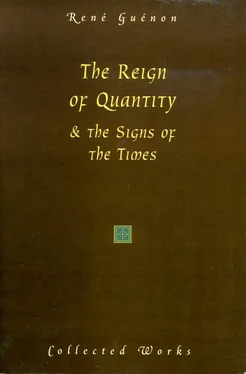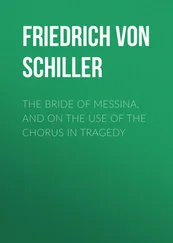These last considerations make it understandable that initiation, using the craft as ‘support’, has at the same time, and as it were in a complementary sense, a repercussion on the practice of the craft. The craftsman, having fully realized the possibilities of which his professional activity is but the outward expression, and thus possessing the effective knowledge of that which is the very principle of his activity, will thenceforth consciously accomplish what was previously only a quite ‘instinctive’ consequence of his nature; and thus, since for him initiatic knowledge is born of the craft, the craft in its turn will become the field of application of the knowledge, from which it will no longer be possible to separate it. There will then be a perfect correspondence between the interior and the exterior, and the work produced can then become the expression, no longer only to a certain degree and in a more or less superficial way, but the really adequate expression, of him who conceived and executed it, and it will then constitute a ‘masterpiece’ in the true sense of the word.
There is thus no difficulty in seeing how far removed true craft is from modern industry, so much so that the two are as it were opposites, and how far it is unhappily true that in the ‘reign of quantity’ the craft is, as the partisans of ‘progress’ so readily declare, a ‘thing of the past’. The workman in industry cannot put into his work anything of himself, and a lot of trouble would even be taken to prevent him if he had the least inclination to try to do so; but he cannot even try, because all his activity consists solely in making a machine go, and because in addition he is rendered quite incapable of initiative by the professional ‘formation’ — or rather deformation — he has received, which is practically the antithesis of the ancient apprenticeship, and has for its sole object to teach him to execute certain movements ‘mechanically’ and always in the same way, without having at all to understand the reason for them or to trouble himself about the result, for it is not he, but the machine, that will really fabricate the object. Servant of the machine, the man must become a machine himself, and thenceforth his work has nothing really human in it, for it no longer implies the putting to work of any of the qualities that really constitute human nature. [31] It may be remarked that the machine is in a sense the opposite of the tool, and is in no way a ‘perfected tool’ as many imagine, for the tool is in a sense a ‘prolongation’ of the man himself, whereas the machine reduces the man to being no more than its servant; and, if it was true to say that ‘the tool engenders the craft’, it is no less true that the machine kills it; the instinctive reactions of the artisans against the first machines thus explain themselves.
The end of all this is what is called in present-day jargon ‘mass-production’, the purpose of which is only to produce the greatest possible quantity of objects, and of objects as exactly alike as possible, intended for the use of men who are supposed to be no less alike; that is indeed the triumph of quantity, as was pointed out earlier, and it is by the same token the triumph of uniformity. These men who are reduced to mere numerical ‘units’ are expected to live in what can scarcely be called houses, for that would be to misuse the word, but in ‘hives’ of which the compartments will all be planned on the same model, and furnished with objects made by ‘mass-production’, in such a way as to cause to disappear from the environment in which the people live every qualitative difference; it is enough to examine the projects of some contemporary architects (who themselves describe these dwellings as ‘living-machines’) in order to see that nothing has been exaggerated. What then has happened to the traditional art and science of the ancient builders, or to the ritual rules by which the establishment of cities and of buildings was regulated in normal civilizations? It would be useless to press the matter further, for one would have to be blind to fail to see the abyss that separates the normal from the modern civilization, and no doubt everyone will agree in recognizing how great the difference is; but that which the vast majority of men now living celebrate as ‘progress’ is exactly what is now presented to the reader as a profound decadence, continuously accelerating, which is dragging humanity toward the pit where pure quantity reigns.
9
The Twofold Significance of Anonymity
In connection with the traditional conception of the crafts, which is but one with that of the arts, there is another important question to which attention must be drawn: the works of traditional art, those of medieval art, for instance, are generally anonymous, and it is only very recently that attempts have been made, as a result of modern ‘individualism’, to attach the few names preserved in history to known masterpieces, even though such ‘attributions’ are often very hypothetical. This anonymity is just the opposite of the constant preoccupation of modern artists to affirm and to make known above all their own individualities; on the other hand, a superficial observer might think that it is comparable to the anonymity of the products of present-day industry, although the latter have no claim whatever to be called ‘works of art’; but the truth is quite otherwise, for although there is indeed anonymity in both cases, it is for exactly contrary reasons. It is the same with anonymity as with many other things which by virtue of the inversion of analogy, can be taken either in a superior or in an inferior sense: thus, for example, in a traditional social organization, an individual can be outside the castes in two ways, either because he is above them ( ativarna ) or because he is beneath them ( avarna ), and it is evident that these cases represent two opposite extremes. In a similar way, those among the moderns who consider themselves to be outside all religion are at the extreme opposite point from those who, having penetrated to the principial unity of all the traditions, are no longer tied to any particular traditional form. [32] Such people could say with Muḥyi ’d-Dīn ibn al-‘Arabī: ‘My heart has become capable of all forms: it is a pasture for gazelles and a monastery for Christian monks, and a temple for idols, and the Kaabah of the pilgrim, and the table of the Thorah and the book of the Quran . I am the religion of Love, whatever road his camels may take; my religion and my faith are the true religion.’
In relation to the conditions of the normal humanity, or to what may be called its ‘mean’, one category is below the castes and the other beyond: it could be said that one has fallen to the ‘infra-human’ and the other has risen to the ‘supra-human’. Now, anonymity itself can be characteristic both of the ‘infra-human’ and of the ‘supra-human’: the first case is that of modern anonymity, the anonymity of the crowd or the ‘masses’ as they are called today (and this use of the highly quantitative word ‘mass’ is very significant), and the second case is that of traditional anonymity in its manifold applications, including its application to works of art.
In order to understand this properly, recourse must be had to the doctrinal principles that are common to all the traditions. The being that has attained a supra-individual state is, by that fact alone, released from all the limiting conditions of individuality, that is to say it is beyond the determinations of ‘name and form’ ( nāma-rūpa ) that constitute the essence and the substance of its individuality as such; thus it is truly ‘anonymous’, because in it the ‘ego’ has effaced itself and disappeared completely before the ‘Self’. [33] On this subject, see A. K. Coomaraswamy, ‘ Ākiṃchañña : Self-Naughting’, New Indian Antiquary (Bombay) 3 (1940).
Those who have not effectively attained to such a state must at least, as far as their capabilities permit, use every endeavour to reach it; and they must consequently and no less consistently ensure that their activity imitates the corresponding anonymity, so that it might be said to participate therein to a certain extent, and it will then furnish a ‘support’ for a spiritual realization to come. This is specially noticeable in monastic institutions, whether Christian or Buddhist, where what may be called the ‘practice’ of anonymity is always kept up, even if its deeper meaning is too often forgotten; but it would be wrong to suppose that the reflection of that kind of anonymity in the social order is confined to this particular case, for that would be to give way to the illusion of the distinction between ‘sacred’ and ‘profane’, a distinction which, let it be said once more, does not exist and has not even any meaning in strictly traditional societies. What has been said about the ‘ritual’ character of the whole of human activity in such societies explains this sufficiently, and, particularly as far as the crafts are concerned, it has been shown that their character was such that it was thought right to speak of ‘priesthood’ in connection with them; there is therefore nothing remarkable in the fact that in them anonymity was the rule, because it represents true conformity to the ‘order’ which the artifex must apply himself to realize as perfectly as possible in everything he does.
Читать дальше











